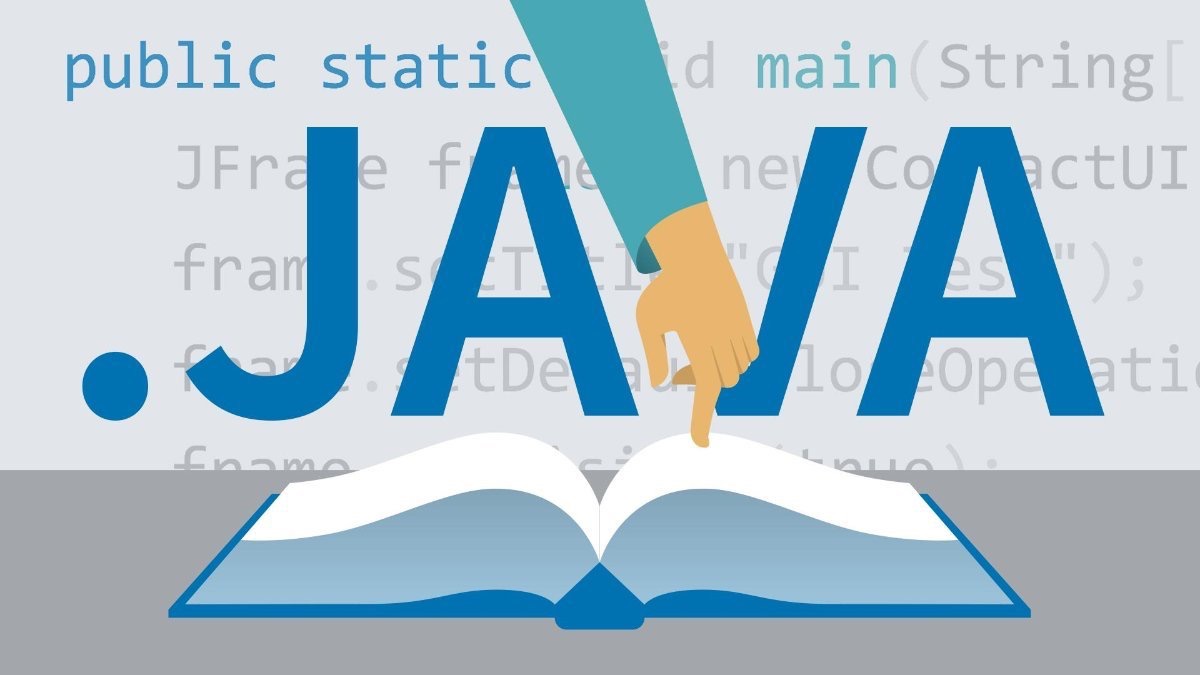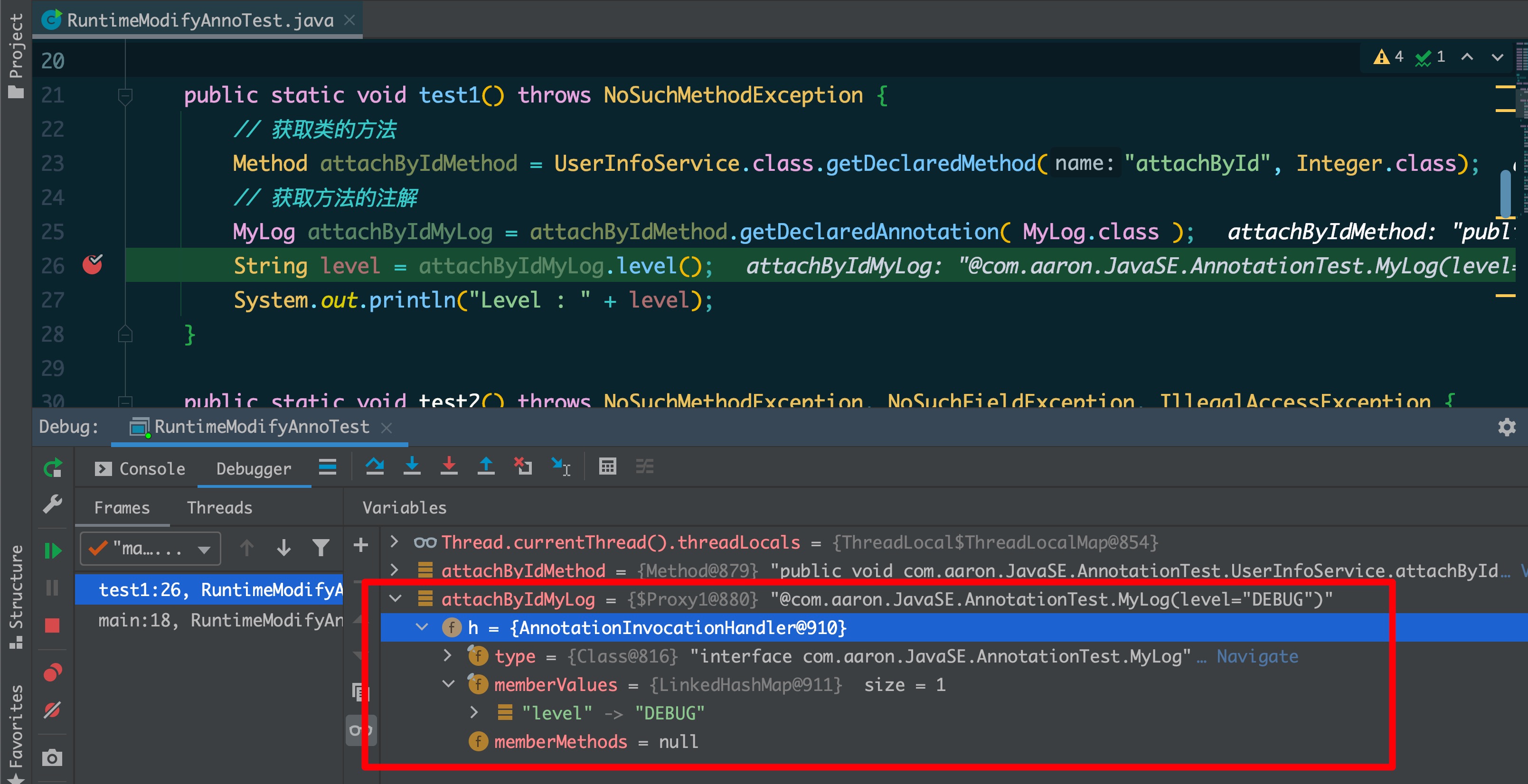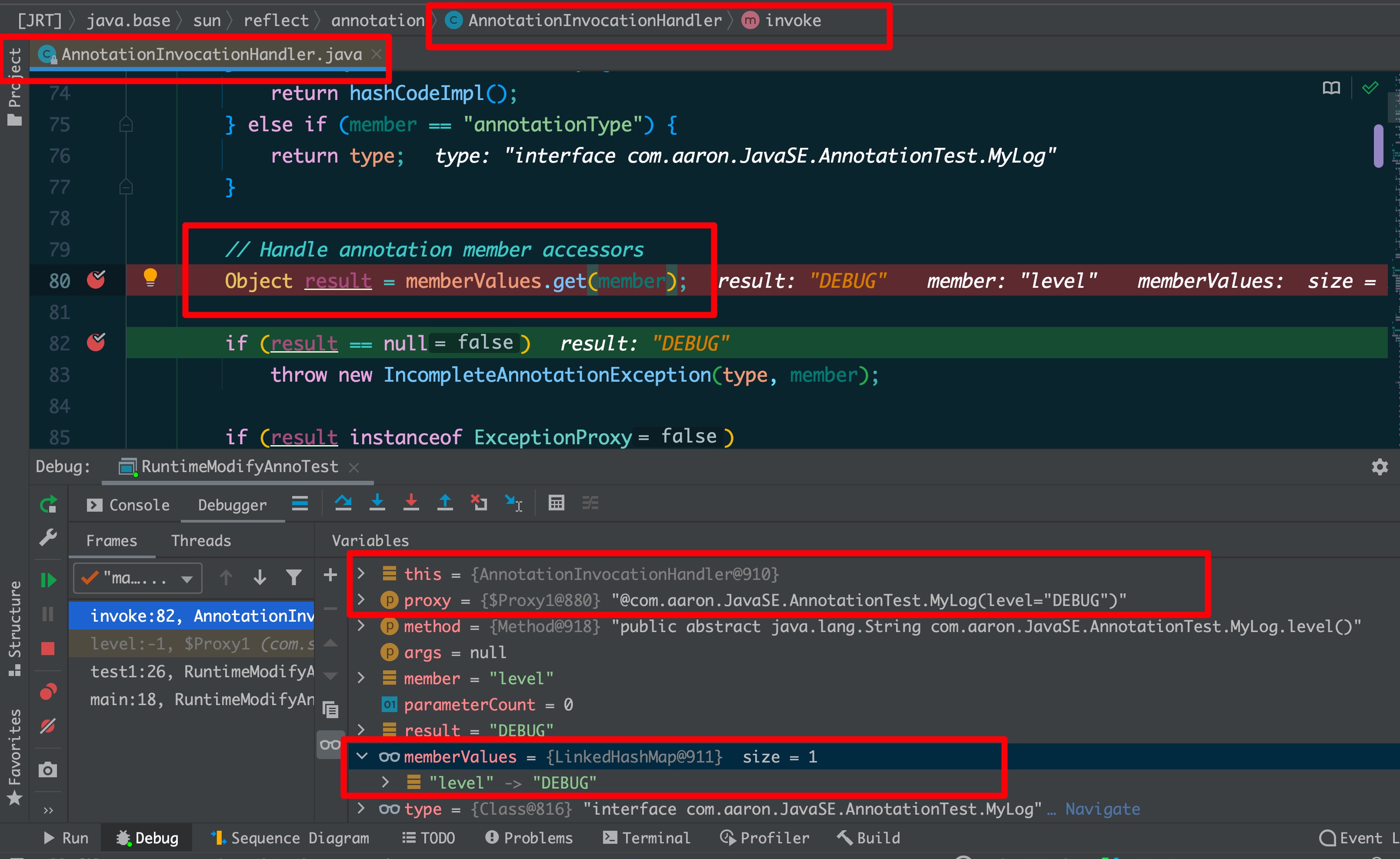这里介绍如何在运行时修改注解的值

基本原理
查看JDK中Annotation接口的注释,说明所有注解都扩展自Annotation接口。换言之,注解本质上就是一个继承了Annotation的接口
1
2
3
4
5
6
7
8
9
10
11
| package java.lang.annotation;
public interface Annotation {
...
}
|
这里,我们先自定义一个注解@MyLog,同时定义一个类UserInfoService来使用该注解
1
2
3
4
5
6
7
8
9
10
11
12
13
14
15
16
17
18
19
20
21
22
|
@Target(ElementType.METHOD)
@Retention(RetentionPolicy.RUNTIME)
public @interface MyLog {
String level() default "TRACE";
}
...
public class UserInfoService {
@MyLog( level = "DEBUG")
public void attachById(Integer userId) {
}
@MyLog( level = "INFO")
public void batchDelete(List<Integer> ids) {
}
}
|
现在我们通过debug的方式来查看反射后的注解对象。由于注解的具体实现类是利用JDK动态代理生成的。故我们通过反射获得的注解对象,实际上是运行时生成的动态代理对象Proxy
1
2
3
4
5
6
7
8
9
10
11
12
13
14
| public class RuntimeModifyAnnoTest {
public static void main(String[] args) throws NoSuchMethodException {
test1();
}
public static void test1() throws NoSuchMethodException {
Method attachByIdMethod = UserInfoService.class.getDeclaredMethod("attachById", Integer.class);
MyLog attachByIdMyLog = attachByIdMethod.getDeclaredAnnotation( MyLog.class );
String level = attachByIdMyLog.level();
System.out.println("Level : " + level);
}
}
|

而当我们通过这个动态代理对象Proxy访问level属性值时,其会通过调用 AnnotationInvocationHandler 的invoke方法来实现。进一步地观察invoke方法的源码,不难看出其最终是从memberValues这个Map中获取到对应的值

实践
现在,我们如果期望在运行时修改注解的属性值就非常简单了。只需先通过反射获取注解的代理对象,然后获取该代理对象的InvocationHandler实例,最后修改AnnotationInvocationHandler实例的memberValues字段中属性值即可。下述代码,尝试将attachById方法上@MyLog注解的值由DEBUG修改为WARN;而batchDelete方法上@MyLog注解的值则不会收到影响
1
2
3
4
5
6
7
8
9
10
11
12
13
14
15
16
17
18
19
20
21
22
23
24
25
26
27
28
29
30
31
32
33
34
35
36
37
38
39
40
41
42
|
public class RuntimeModifyAnnoTest {
public static void main(String[] args) throws NoSuchMethodException, NoSuchFieldException, IllegalAccessException {
test2();
}
public static void test2() throws NoSuchMethodException, NoSuchFieldException, IllegalAccessException {
Method attachByIdMethod = UserInfoService.class.getDeclaredMethod("attachById", Integer.class);
MyLog attachByIdMyLog = attachByIdMethod.getDeclaredAnnotation( MyLog.class );
String level = attachByIdMyLog.level();
System.out.println("attachById方法 @MyLog注解 level属性值: " + level);
InvocationHandler invocationHandler = Proxy.getInvocationHandler( attachByIdMyLog );
Field memberValuesField = invocationHandler.getClass().getDeclaredField("memberValues");
memberValuesField.setAccessible(true);
Map<String, Object> memberValues = (Map<String, Object>) memberValuesField.get(invocationHandler);
memberValues.put("level", "WARN");
level = attachByIdMyLog.level();
System.out.println("attachById方法 @MyLog注解 level属性值: " + level);
Method batchDeleteMethod = UserInfoService.class.getDeclaredMethod("batchDelete", List.class);
MyLog batchDeleteMyLog = batchDeleteMethod.getDeclaredAnnotation( MyLog.class );
level = batchDeleteMyLog.level();
System.out.println("batchDelete方法 @MyLog注解 level属性值: " + level);
}
}
|
效果如下所示





